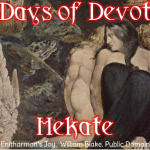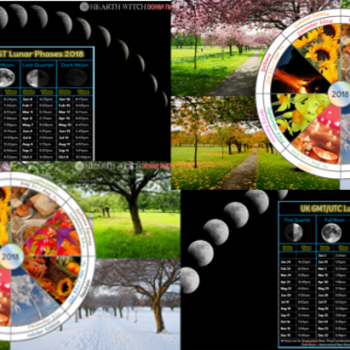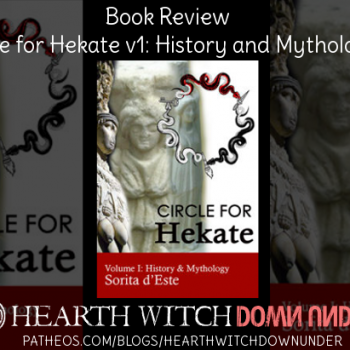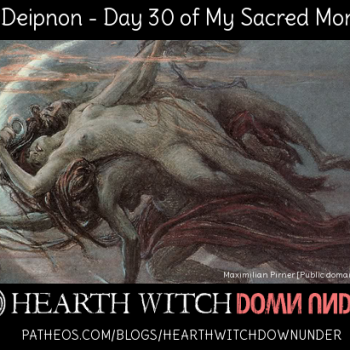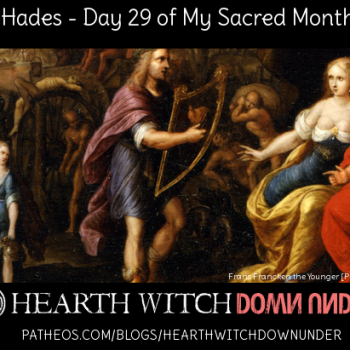This post part of a blog challenge series, 30 Days of Devotion to Hekate. It’s day 6 and we are looking at deities and entities who are associated with Hekate.
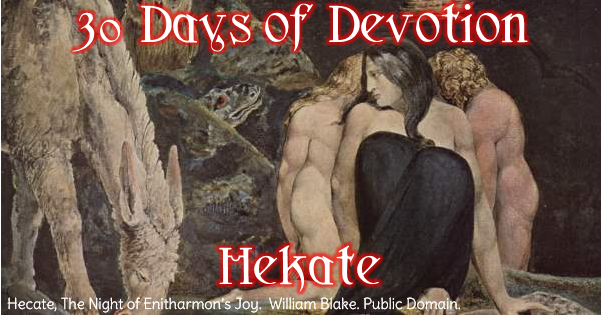
Hermes
I find it odd that I don’t see Hermes mentioned very often in connection to Hekate, when the two are so, well, close. In many katadesmos (curse tablets) in ancient Hellas people would call on both Hekate and Hermes to help in the curse. One may not think that Hermes would be the one to call on for help with a curse, but He certainly is, especially when He is called alongside Hekate.
Psychopomp – Hermes Khthonios would lead the recently dead to the Underworld, to Charon to cross the Styx or Acheron, and Hekate Khthonia would lead the hosts of the dead, ghosts as it were, out of the Underworld.
The Mysteries – They both play important roles in the Eleusinian Mysteries. Hekate it was who helped Demeter find where Kore had been taken. Hermes was the one sent to the Underworld to retrieve Persephone. They both play a role in Persephones ascent and descent each year.
Lovers – Though at times Hekate is said to have had a mortal husband, Hermes is the only one who is ever considered to possibly be or have been consorted to Her. At any rate, Brimo, who is perhaps Hekate, did indeed lay with Hermes. It is even said that the two of Them have a child together, Hermekate – but we know very little of Hermekate and who, what or how popular She/He/It was.
Crossroads – Both are connected greatly to crossroads, Hekate 3-way and Hermes 3 and 4-way crossroads. They are also both connected to roads and paths in general, and thus are the ones best called on when travelling. In ancient times, and if only we could see such today, it was common to find statues to Hermes, called ‘herms’ on the roadside – these could be normal Hermes statues, or they may be headless statues, and in some cases a simple stacking of stones. Hekate on the other hand had Her triple Hekate statues placed at crossroads. It was common for both of these deities to receive offerings at these road and crossroads shrines.
Hermes has an epithet which is Hermes Tricephalos, the Three Headed, usually referring to roads and intersections. Hekate is Hekate Trimorphis, the Three Bodied and Hekate Trioditos, of the Crossroads or Of The Threeways.
Conflation – I mentioned above, Hermekate. I said we know little about Them. This is true, and in fact some believe that Hermekate is actually a conflation, a merging of Hermes and Hekate together to form another deity entirely. A friend of mine is working on some theories about this sort of conflation, so I won’t discuss it much, but this conflation belief is noteworthy.
Demeter and Persephone
I have already discussed this in the previous Favourite Myths post, but I guess we have to mention it again. Hekate was of course instrumental in Demeters search for Kore and after Persephone was found, Hekate became Her minister and would help lead Her to and from the Underworld each year. And so Hekate is part of the Eleusinian Mysteries.
Some speak of the three as the real Triple Goddess of modern Paganism. I think it was in Tara Sanchezs book, Temple of Hekate, that I read the idea that Hekate, in this Triple Goddess is actually the Maiden, Persephone is now the Mother/Wife and Demeter is now the Crone, which is shown via Her bringing barrenness to the world every year, and Her decision to become an old woman while searching for Kore.
And of course, as an Underworld Goddess, Hekate certainly is connected to Persephone either way, since Persephone is the Queen of the Underworld. But Hekate is also an earth Goddess, and as such has that connection to Demeter.
Artemis
Hekate is often conflated with Artemis and sometimes it is hard to tell whether it is Hekate or Artemis in a myth, spell, hymn or piece of art.
Moon – Both of them are of course lunar deities, and it is very common for lunar Goddesses to become conflated.
Hunting – Hekate is sometimes shown as carrying a bow and golden arrows, dressed in a hunters skirt and boots. She looks a lot like Artemis in such representations, and yet it is Hekate. They are also often both shown carrying torches and followed by hounds.
Children – Artemis is of course a Goddess of childbirth, come from helping Her mother birth Her younger twin brother Apollon. She is also considered a protector of children, as is Hekate. Both are often conflated with or given the epithet of Kourotrophos, ‘child nurturer’.
Others – Artemis is sometimes given the epithet of Hekate, literally, Artemis Hekate. They share other epithets as well, such as Soteira, Saviour and Phosphorus, as light Goddesses. And of course they are both maiden Goddesses, independent of men.
Selene and Artemis
Of course we have discussed the conflation of Hekate and Artemis, but today it is more common to see the two mentioned together with Selene. As the Triple Goddess. The title card image of this series is actually of Hekate with Artemis and Selene, though you can’t quite tell who is behind Hekate, you can see Their sacred animals in the picture.
This Triple Goddess is not entirely a modern thing, as some say it is. It was actually quite popular in Roman poetry, most notably the works of Seneca. Though I am not sure there is any reference to the Maiden-Mother-Crone aspects in this triplicate, that seems to be a more modern idea attached to the Roman Trivia idea.
In the modern version, Artemis (or more commonly Roman Diana) is the Maiden, Selene is the Mother and Hekate is the Crone.
Over the page we look at Circe and Medea, Ghosts and Daimons and a few others.

